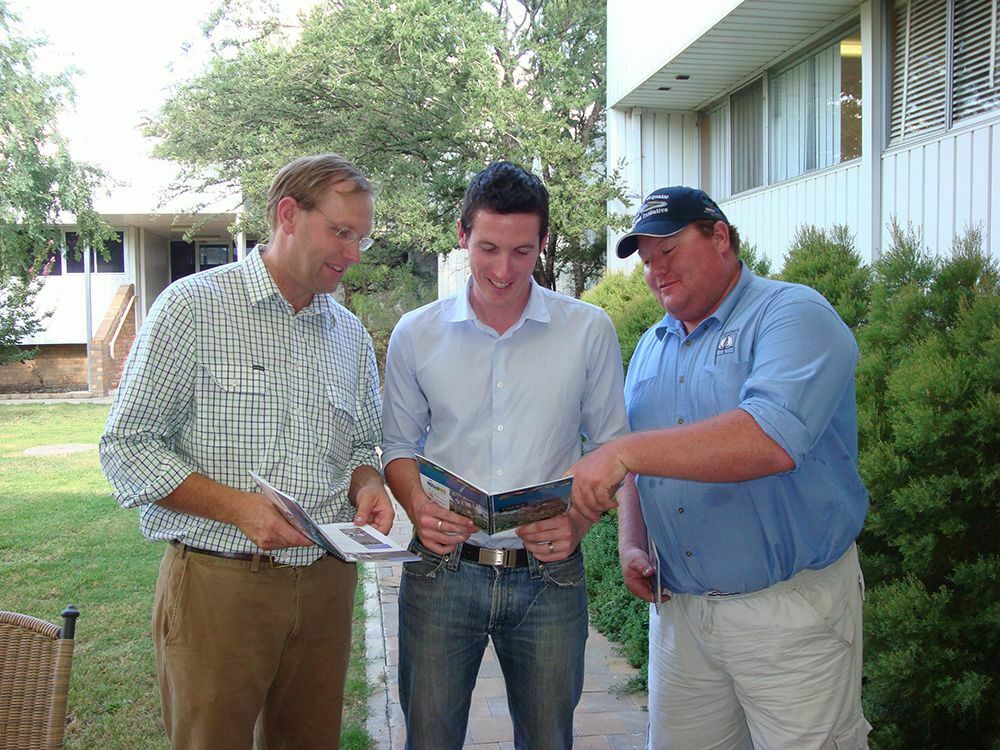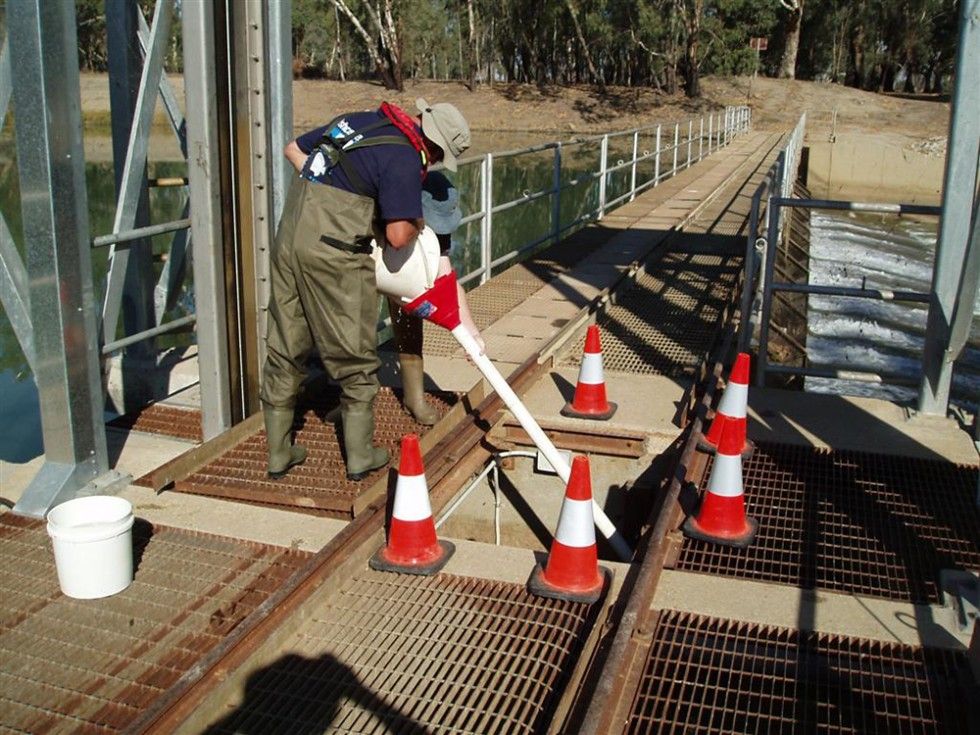River regulation practices have substantially changed the character of the MDB and have contributed to the decline in native fish populations. The Native Fish Strategy (NFS) included aims to manage riverine structures to help modify flow regulation practices and minimise impacts on native fish. It was recognised the irrigation and agricultural industry are important stakeholders to engage with, as irrigation is the largest water user in the MDB, and agricultural practices are both extensive and diverse.
The Community Stakeholder Taskforce (CST) included a representative from the irrigation industry who participated in NFS meetings and provided input to research projects. There were several research projects undertaken within the NFS program which had relevance to, and involvement of, the irrigation industry. Irrigation representatives provided valuable input through project steering committees.
A project which quantified the effects of selected irrigation practices on fish of the MDB found that the significant numbers of fish are lost from rivers through direct entrainment by pumps and at diversion weirs. This study identified the species most susceptible to the effects of extraction and possible mechanisms to mitigate these effects. Another research project quantified the impacts of weirs on downstream passage of fish. Significant numbers of larvae of many species died during undershot weir passage. This project highlighted that further work was needed to understand whether the injuries observed were due to pressure change or shear stress. Once known, then hydraulic modifiers could be developed which were appropriate to the biology of target species. For pump systems, the project recommended that screens be developed to minimise impacts on fish. the design and retrofit of undershot weirs with ‘fish friendly’ hydraulic modifiers and assessment of the applicability of stationary screens to prevent fish entrainment and subsequent injuries

Following this work, options to reduce fish extraction through development of screening techniques were investigated. The project to develop fish screening criteria for water diversions involved the participation of irrigators in several ways. Local irrigators were involved through the hosting of field trials on their properties. A range of irrigators also attended public meetings in Narrabri to provide input on early experimental designs and approaches to the project. The project team toured sites in the USA where there is a well-established screening program to learn about their successes and failures, and to bring this knowledge to the MDB.
This project used a strong collaborative approach to address the impacts of irrigation methods on fish, and highlighted the importance of giving ownership to water users by involving them from the start. Presentations on the research results were given at a Cotton Cooperative Research Centre forum, which also initiated some broader connections with the irrigation industry. A key recommendation of the work was the need to establish a Fish Screening Taskforce comprised of fish biologists, irrigation engineers, irrigators, recreational fishers and conservation managers. Such an approach would be similar to the successful NFS Fish Passage Taskforce, as well as a similar group in Oregon, USA, which the project team liaised with.
Irrigators were also involved with some Demonstration Reaches. The Cotton CRC provided funding for the Namoi Demonstration Reach to help engage irrigators along the reach and implement onground activities. Staff from the CRC provided great assistance in identifying and engaging irrigators, enhancing the adoption of this concept in the community.
Additional funding from the CRC resulted in the production of the Fishes on Cotton Farms book for north-west NSW, compiled by NFS Coordinators, CST members, NSW DPI and CRC staff. The guide outlined management actions that irrigators can implement to make their practice more fish friendly, whilst also highlighting the biology and ecology of fish species expected in the region. The book was also subsequently converted into a calendar to help further disseminate the information.
Through these efforts associated with the NFS, it is clear that there has been progress in bringing these varied stakeholder groups together to build understanding and effective working relationships. However, it must be recognised that a long term, concerted effort is required, which could potentially be achieved through a Fish Screening Taskforce. There is a need for managers and scientists to work with the irrigation industry to develop infrastructure that improves both water delivery and ecological outcomes. Initiation of a taskforce would likely allow experts to come together to better understand each other’s perspectives, skills and constraints in engineering design and water management.
